كم من الوقت سوف أ 48 بطارية فولت الأخيرة?
عندما تخطط لنظام تخزين الطاقة لمنزلك, خاصة بالنسبة للطاقة الشمسية أو النسخ الاحتياطي, يعد منصة 48 فولت معيارًا شائعًا وفعالًا. السؤال الرئيسي الذي ينشأ بشكل طبيعي هو, "كم من الوقت ستستمر بطارية 48 فولت بالفعل?" الجواب ليس في الجهد وحده; يتم تحديده من خلال سعة البطارية وكيف تستخدمها.
يعتمد وقت تشغيل بطارية 48 فولت بالكامل على ساعة أمبير (آه) أو كيلووات ساعة (كيلووات ساعة) تصنيف السعة وسحب السلطة (في واتس) من الأجهزة التي تديرها. بطارية سعة أكبر, مثل وحدة 48V 200AH, سوف تستمر مرتين لمدة 48 فولت 100AH تحت نفس الحمل. تجعل أنظمة البطاريات التي تم تثبيتها على الحائط 48 فولت من السهل اختيار السعة المناسبة لاحتياجاتك.
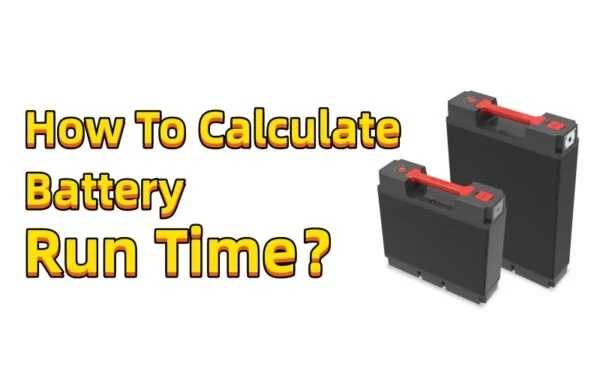
في جيكس سولار, نحن متخصصون في تصميم أنظمة الطاقة 48V التي توفر موثوقة, قوة طويلة الأمد. دعنا نقسم كيفية حساب وقت التشغيل والإجابة على بعض الأسئلة الهامة الأخرى حول هذه البطاريات القوية.
كم عدد الألواح الشمسية التي أحتاجها لشحن بطارية 48V 100AH?
إن إقران بطارية 48V 100AH الخاص بك مع الألواح الشمسية هو مفتاح استقلال الطاقة الحقيقي. ولكن كيف يمكنك حجم مجموعة الطاقة الشمسية الخاصة بك لضمان حصول بطاريتك على شحن كامل كل يوم?
لتوجيه الاتهام بشكل موثوق أ 48في 100ah (وهو 4.8 كيلووات ساعة) بطارية في يوم عادي, ستحتاج عمومًا إلى مجموعة لوحة شمسية تقريبًا 1.5 كيلوواط ل 2.5 كيلوواط. هذا يترجم إلى حوالي 4 ل 6 حديث, ألواح شمسية عالية الكفاءة 400W. يعتمد الرقم الدقيق على موقعك المحدد, الوقت من العام, وأنماط الطقس المحلية.
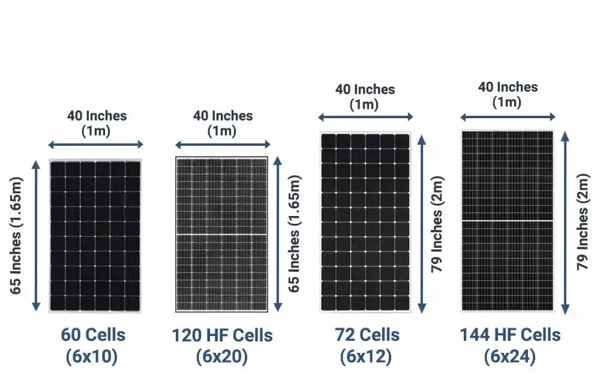
الغوص أعمق: مناخات إقليمية مختلفة
إليك كيفية تحديد حجم صفيف الطاقة الشمسية الصحيح:
- الطاقة لتجديد: 48V 100AH LFP (الفوسفات الحديد الليثيوم) متاجر البطارية حول 4.8 كيلوواط ساعة من الطاقة. لإعادة شحنها بالكامل يوميًا, تحتاج إلى إنشاء هذا المبلغ بالإضافة إلى القليل من الخسائر في النظام.
- ساعات شمس الذروة (PSH): هذا عامل حاسم يختلف بحلول الموسم. في اليابان, قد تنتهي 4.5 PSH في الصيف ولكن فقط 2.5-3 PSH في يوم صاف في الشتاء. نقوم بتصميم أنظمة على أساس متوسط محافظ على مدار السنة (على سبيل المثال, 3.5 - 4 PSH) لضمان شحن موثوق لمعظم العام.
- خسائر النظام: نحن نأخذ الطاقة المفقودة بسبب حرارة اللوحة, الأسلاك, وكفاءة وحدة تحكم شحن MPPT (عادة 15-25% إجمالي الخسارة).
- الحساب:
- الطاقة الشمسية المطلوبة (كيلوواط) = الطاقة اللازمة (كيلووات ساعة) / (عامل الكفاءة الساعات الذروة X)
- مثال:
4.8 kWh / (3.5 hours x 0.80 efficiency) = 1.7 kW (1700 Watts) - هذا يعني
1700W / 400W per panel ≈ 4 to 5 panels. غالبًا ما نوصي بلوحة إضافية لتوفير مخزن مؤقت للأيام الغائمة.
هذا حذر, يضمن التحجيم الخاص بالموقع أن تكون بطاريتك جاهزة لتشغيلك طوال الليل أو موسم Typhoon التالي.
ما هو وقت النسخ الاحتياطي لبطارية ليثيوم 100ah 48v?
دعونا نحصل على محدد. لديك بطارية ليثيوم 100AH 48V. كم ساعة من طاقة النسخ الاحتياطي الذي يمكن أن تتوقعه منه بالفعل أثناء انقطاع التيار الكهربائي?
أ 100AH 48V بطارية الليثيوم يوفر ما مجموعه 4,800 واط ساعة (هل) أو 4.8 كيلووات ساعة (كيلووات ساعة) تخزين الطاقة. وقت النسخ الاحتياطي هو هذه الطاقة الإجمالية مقسومة على استهلاك الطاقة لأجهزةك. على سبيل المثال, يمكن أن يعمل 480-واط تحميل لحوالي 10 ساعات أو أخف 200-واط تحميل ل 24 ساعات.
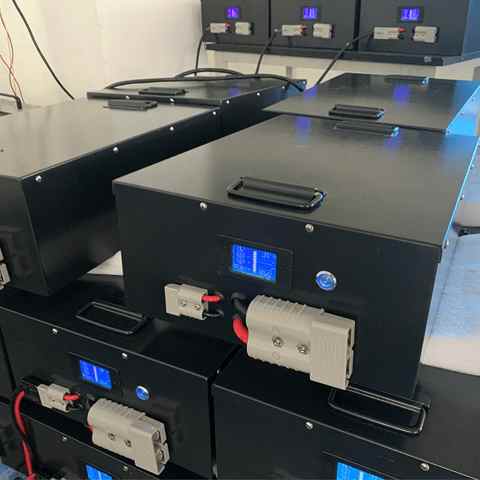
الغوص أعمق: حساب وقت تشغيل النسخ الاحتياطي
ها هي الرياضيات البسيطة:
وقت التشغيل (ساعات) = إجمالي الطاقة (هل) / تحميلك (واتس)
دعونا نلقي نظرة على بعض السيناريوهات العملية للمنزل:
- سيناريو 1: الأحمال الأساسية (تقريبا. 300دبليو): خلال انقطاع, أنت تقوم بتشغيل الثلاجة الفعالة الخاصة بك, عدة مصابيح LED, جهاز توجيه الإنترنت الخاص بك للحصول على التحديثات, وشحن هواتفك.
4,800 Wh / 300 W = 16 hours
- سيناريو 2: أحمال معتدلة (تقريبا. 800دبليو): يمكنك إضافة تلفزيون وطباخ الأرز إلى الأساسيات.
4,800 Wh / 800 W = 6 hours
هذا هو السبب الحديث 48بطارية مثبتة على الحائط الأنظمة تحظى بشعبية كبيرة. توفر وحدة واحدة 4.8 كيلو وات ساعة نسخة احتياطية ممتازة للضروريات. ولأنها معيارية, يمكنك بسهولة إضافة وحدة ثانية لمضاعفة وقت النسخ الاحتياطي لمزيد من راحة البال. في GYCX Solar, نحن نساعدك على إجراء تحليل تحميل لضمان حصولك على وقت النسخ الاحتياطي الذي تتوقعه.
هل تسير بطاريات الليثيوم سيئة من الجلوس?
ماذا لو كان لديك نظام بطارية ولكن لا تستخدمه لفترة من الوقت? هل يمكن أن تسير بطارية الليثيوم بشكل سيء فقط من الجلوس في التخزين, غير مستخدم?
جميع البطاريات, بما في ذلك ليثيوم أيون, سوف يتحلل ببطء مع مرور الوقت حتى عندما لا تكون قيد الاستخدام. وهذا ما يسمى تقويم الشيخوخة. لكن, LFP الحديثة (الفوسفات الحديد الليثيوم) البطاريات مستقرة بشكل استثنائي. لديهم أيضا منخفض جدا معدل تفريغ الذات (1-3% كل شهر), وهذا يعني أنهم يخسرون القليل من الشحن أثناء الجلوس. مفتاح ضمان حياة طويلة في التخزين هو الاحتفاظ بها في مكان رائع في حالة جزئية من الاتهام (حول 40-60%).
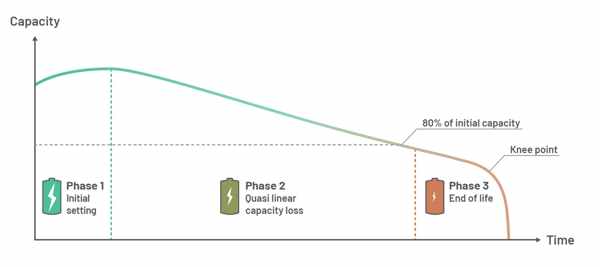
الغوص أعمق: التقويم الشيخوخة مقابل. تفريغ الذات
من المهم أن تعرف الطريقتين الذي تتراوح فيه البطارية أثناء الخمول:
- تفريغ الذات: هذا هو الخسارة المؤقتة والبطيئة للشحن. يمكنك ببساطة إعادة شحن البطارية لاستعادتها. يعني انخفاض معدل بطاريات LFP أنه يمكنك تخزينها لأكثر من عام وسيظلون يحتفظون بشحن كبير.
- تقويم الشيخوخة: هذا هو الدائم, خسارة لا رجعة فيها للقدرة التي تحدث على مدى سنوات, بغض النظر عن الاستخدام. تتأثر سرعة هذه العملية بشكل كبير بعاملين:
- درجة حرارة: الحرارة هي أكبر عدو. بطارية مخزنة في بيئة ساخنة ستقدم أسرع بكثير من واحدة مخزنة في بارد, مساحة تسيطر عليها المناخ.
- حالة الشحن: للتخزين على المدى الطويل, الحفاظ على بطارية الليثيوم في 100% الكامل يضع الضغط على خلاياها ويسرع الشيخوخة. تخزينه في 0% هو أيضا خطير. أ 40-60% الرسوم هي الحالة المثالية منخفضة التوتر للتخزين.
يمكن أن تجلس بطارية LFP المخزنة بشكل صحيح لفترة طويلة جدًا وتظل بصحة جيدة وجاهزة للخدمة.
هل يمكن لبطارية الليثيوم أن تشتعل عند عدم الشحن?
سلامة البطارية هي أهم اعتبار. كثيرا ما نسمع عن الحرائق المتعلقة بالشحن, ولكن هل يمكن لجودة عالية بطارية الليثيوم1, مثل واحد في نظام تخزين المنزل, اشتعلت فيها النار عندما يجلس هناك فقط, عدم شحن أو تفريغ?
إنها نادر للغاية لجودة عالية, بطارية الليثيوم غير تالفة لإطلاق النار تلقائيًا عندما لا تكون قيد الاستخدام. من المؤكد أن مثل هذا الحدث يتطلب وجودًا مسبقًا دائرة قصيرة داخلية, الذي يحدث عادة إما أ عيب التصنيع أو الأضرار الجسدية السابقة إلى البطارية. هذا هو السبب في اختيار البطاريات من الشركات المصنعة ذات السمعة الطيبة مع مراقبة جودة صارمة وكيمياء آمنة مثل LFP أمر بالغ الأهمية.
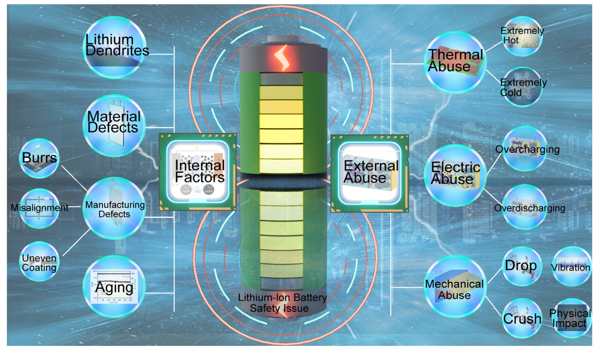
الغوص أعمق: فهم وتخفيف المخاطر
إليك تفاصيل موضوع السلامة الرئيسي هذا:
- السبب (دائرة قصيرة داخلية): داخل خلية البطارية توجد طبقات رفيعة من المواد الإيجابية والسلبية مفصولة بفاصل. يمكن أن تبدأ النار إذا لم تلمس هذه الطبقات. يمكن أن يكون سبب هذا عيب التصنيع المجهري أو إذا تم إسقاط البطارية, داحس, أو ثقب, تسبب أضرار داخلية.
- دور مراقبة الجودة: يستثمر مصنعو البطاريات ذات السمعة الطيبة بشكل كبير في تصنيع غرف نظيفة واختبار متعدد المراحل (بما في ذلك الأشعة السينية واختبارات الشيخوخة) للكشف عن الخلايا مع عيوب محتملة. هذا هو خط الدفاع الأول والأهم.
- ميزة السلامة LFP: هذا أمر بالغ الأهمية. LFP (الفوسفات الحديد الليثيوم) الكيمياء بطبيعتها أكثر استقرارًا كيميائيًا وحراريًا من أنواع الليثيوم أيون الأخرى (مثل NMC أو LCO الموجودة في الهواتف وأجهزة الكمبيوتر المحمولة). حتى لو تفشل خلية LFP, من الأرجح أن تنفيس الدخان والفشل بأمان بدلاً من اندلاعها إلى حريق عنيف.
- أهمية نظام الحماية: محترف 48بطارية مثبتة على الحائط ليست مجرد بطارية; إنه بيس. القوي, تم تصميم العلبة الواقية لمنع الأضرار المادية التي قد تؤدي إلى قصيرة داخلية. يوفر BMS الداخلي أيضًا طبقة من المراقبة المستمرة.
سلامة عملائنا هي أولويتنا القصوى. لهذا السبب نستخدم بطاريات LFP بشكل حصري من الشركات المصنعة ذات المستوى العالمي. نحن نعلم أن مراقبة الجودة الصارمة والسلامة المتأصلة في كيمياء LFP توفر أعلى مستوى من الحماية وراحة البال لنظام مثبت في منزلك.
بطارية 48 فولت هي العمود الفقري لنظام تخزين الطاقة القوي والفعال. فهم المدة التي ستستمر فيها هو حساب بسيط بناءً على قدرته (آه) وحملك (دبليو). حديث 48بطارية مثبتة على الحائط الأنظمة, بنيت مع تقنية LFP آمنة وطويلة الأمد, تقديم موثوقة, الصيانة المنخفضة, وحل طويل الأجل لاستقلال الطاقة وقوة النسخ الاحتياطي.
إذا كانت لديك أسئلة حول تصميم نظام بطارية 48 فولت, تحجيم مجموعة شمسية, أو تريد استكشاف حلول البطارية الأكثر أمانًا والأكثر موثوقية لمنزلك, فريق الخبراء لدينا في GYCX Solar هنا للمساعدة. اتصل بنا للحصول على استشارة مهنية! Gycxsolar يرحب بتشاورك, سوف يمنحك خبرائنا حلًا مرضيًا في الوقت المناسب.
يمكن أن يساعدك استكشاف مخاطر بطاريات الليثيوم في اتخاذ قرارات مستنيرة بشأن استخدامها وتخزينها. ↩
